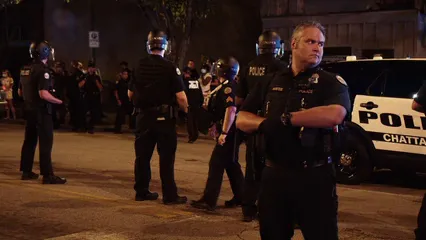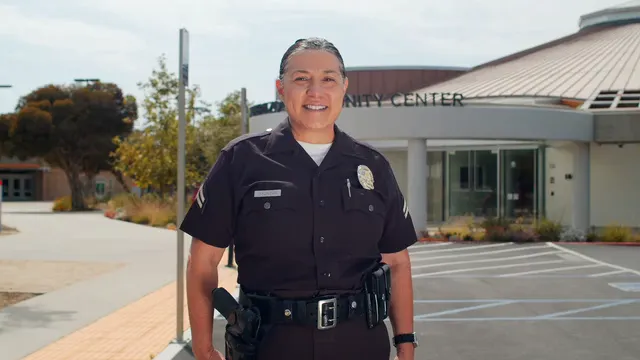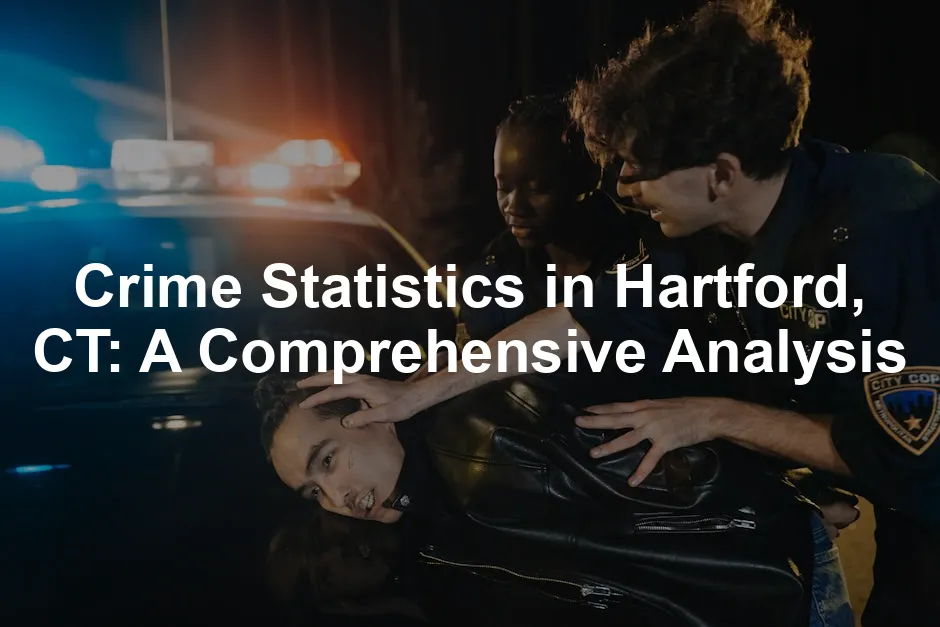Introduction
Hartford, the capital city of Connecticut, is a vibrant hub filled with rich history and culture. Known for its beautiful parks and diverse neighborhoods, Hartford also faces significant challenges, particularly regarding crime. Understanding crime statistics in this city is crucial for residents, potential movers, and policymakers, as it allows them to assess safety and make informed decisions.
This article aims to provide a detailed analysis of crime statistics in Hartford, CT. We will explore various aspects of crime, including rates of violent and property crimes, comparisons to state and national averages, and trends over the years. Understanding these statistics is essential for creating safer communities and informing effective law enforcement strategies.
Now, let’s talk numbers! The crime rate in Hartford stands at a staggering 30 crimes per 1,000 residents. To put that into perspective, your chance of falling victim to a crime here is about 1 in 33. This figure is alarming, especially when compared to Connecticut’s overall crime rates, where Hartford ranks higher than 96% of the state’s cities and towns. As we dig deeper into these statistics, we’ll uncover the realities behind the numbers and what they mean for the Hartford community.

Understanding Crime Statistics
What Are Crime Statistics?
Crime statistics are numerical data representing the incidence and types of crimes occurring within a specific area. These statistics are vital for assessing public safety and understanding crime trends. Accurate crime data can help authorities allocate resources, design policies, and implement prevention strategies effectively.
The collection of crime statistics often relies on various reporting systems, such as the FBI’s Uniform Crime Reporting (UCR) program. This program gathers data from law enforcement agencies across the country, ensuring a standardized approach to crime reporting. Additionally, local law enforcement agencies contribute to these statistics, providing a comprehensive view of crime in specific areas like Hartford.
Collecting crime data involves rigorous processes, including identifying offenses, classifying them into categories, and recording incidents. This detailed information helps policymakers and residents alike understand the safety landscape of their communities. As we continue to analyze crime statistics in Hartford, it’s essential to recognize their relevance in shaping the future of this city.

Importance of Crime Statistics
Crime statistics are essential for residents and communities. They provide a factual basis for understanding safety levels. When people know the crime landscape, they can make informed decisions. Whether deciding to move or engage in community initiatives, these statistics matter.
Urban planners rely on crime stats to design safer environments. They help identify high-risk areas needing attention. Law enforcement uses these numbers to refine strategies. By analyzing trends, they can allocate resources effectively. This ensures that patrols and community programs target areas with the greatest need.
Moreover, communities benefit from understanding crime trends. Neighborhood watch programs, safety workshops, and local initiatives often stem from crime data insights. When residents are aware of local crime patterns, they can work together to enhance safety. Awareness sparks curiosity and leads to proactive solutions.
If you’re looking to enhance your personal safety, consider investing in a Personal Safety Alarm Keychain. It’s a compact device that can emit a loud sound to deter potential attackers and alert those nearby. It’s a small yet mighty tool for peace of mind!

Crime Overview in Hartford
General Crime Rate
Hartford’s overall crime rate paints a concerning picture. With approximately 30 crimes per 1,000 residents, it’s a serious issue. To illustrate, there’s about a 1 in 33 chance of becoming a victim of crime here. This statistic is alarming, especially when compared to national averages. Hartford ranks higher than 96% of Connecticut cities, making it a focal point for safety discussions.
Compared to Connecticut’s average, Hartford’s crime rates are troubling. The state averages are significantly lower, highlighting the challenges faced by Hartford. This discrepancy prompts concern among residents and potential movers alike.

Breakdown of Violent and Property Crimes
Violent Crimes
Violent crimes include serious offenses that affect individuals directly. These encompass murder, rape, robbery, and aggravated assault. Hartford reports a total of 685 violent crimes, which translates to about 5.68 incidents for every 1,000 residents.
The breakdown of these offenses reveals staggering statistics. For instance, the city recorded 37 murders last year, demonstrating a significant public safety concern. Rape incidents, while lower than some other categories, still pose a serious threat. With 22 reported cases, it’s vital to address these issues head-on.
Robbery remains a pressing issue, with 128 instances reported. Aggravated assaults account for the majority, totaling 498 incidents. These figures highlight the urgent need for community engagement and law enforcement strategies aimed at reducing violence.
In summary, the violent crime statistics in Hartford serve as a wake-up call. They signal the necessity for initiatives that promote safety and community cohesion. By understanding these figures, residents can participate in creating a safer environment for everyone.

Property Crimes
Property crimes are offenses that involve the taking of someone else’s property without the use of force. In Hartford, CT, property crimes typically include burglary, theft, and motor vehicle theft.
Burglary refers to illegally entering a building with the intent to commit a crime, usually theft. Theft, on the other hand, encompasses a broader range of offenses, including shoplifting and pickpocketing. Motor vehicle theft involves stealing a car or other vehicle.
Hartford recorded a total of 2,979 property crimes in the last year, translating to a rate of 24.68 incidents per 1,000 residents. That’s quite a staggering figure! For each 1,000 residents, the odds of being a victim of property crime in Hartford are far from comforting.
These statistics highlight the need for engaging community safety initiatives and proactive measures. Residents should stay informed about local crime trends and consider participating in neighborhood watch programs. After all, knowing what’s happening in your area is the first step in making it a safer place to live!

To enhance home security, consider investing in a Home Security System with Camera. With the ability to monitor your property in real-time, these systems provide peace of mind and can deter potential intruders.
Breakdown of Specific Crimes
To truly understand crime in Hartford, CT, let’s take a closer look at specific crime statistics over recent years. The following table illustrates the trends for four major crime categories: murders, assaults, burglaries, and vehicle thefts.
| Crime Type | 2020 | 2021 | 2022 |
|---|---|---|---|
| Murders | 40 | 38 | 37 |
| Assaults | 600 | 554 | 498 |
| Burglaries | 430 | 361 | 347 |
| Vehicle Thefts | 649 | 604 | 620 |
This data reveals some intriguing patterns. For instance, despite a slight decrease in murders from 40 to 37, assaults have shown a notable decline. However, the number of vehicle thefts has fluctuated, with a slight uptick in 2022.

Contributing Factors to Crime in Hartford
Socioeconomic Conditions
Hartford’s crime rates don’t exist in a vacuum. They are often deeply intertwined with socioeconomic conditions. High poverty levels, unemployment, and educational disparities can create environments where crime flourishes.
Poverty, for instance, is like a nasty weed in a garden. It takes root and spreads, affecting everything around it. When people struggle to make ends meet, desperation can lead to crime. The impact is palpable, as neighborhoods with higher poverty rates tend to experience increased crime.
Unemployment also plays a crucial role. With fewer job opportunities, individuals may resort to illegal activities to survive. Education, or lack thereof, compounds this issue. Areas with lower education levels often have higher crime rates. Investing in education can be a powerful antidote to crime.

Law Enforcement Presence
Now, let’s talk about law enforcement. The role of police in crime prevention is vital. Hartford’s police department implements various programs to enhance community safety. One notable initiative is the CompStat program. This innovative system allows for real-time data analysis, enabling police to identify crime trends and allocate resources more effectively.
Through CompStat, law enforcement can swiftly respond to spikes in crime. It’s like having a GPS for policing—guiding officers to areas that need attention. This proactive approach helps build trust between the community and the police. A visible and responsive police presence can deter potential criminals.
Moreover, community engagement initiatives, such as neighborhood watch programs, empower residents to take an active role in their safety. When communities and law enforcement work together, crime rates tend to decrease.

For a more personal approach to safety, consider reading a Self-Defense Training Book. It provides practical tips and techniques that can help you feel more confident in protecting yourself.

In conclusion, understanding the contributing factors to crime in Hartford is essential for effective prevention strategies. By addressing socioeconomic issues and strengthening law enforcement efforts, the city can cultivate a safer environment for all.
Safety Perception and Community Response
Public Sentiment on Crime
The safety perception among Hartford residents is an intricate web of emotions. Surveys reveal a diverse range of feelings about safety in the area. According to a recent poll, 58% of respondents stated they feel “pretty safe,” highlighting a sense of security despite visible concerns. Meanwhile, 33% expressed they feel “somewhat safe,” indicating noticeable apprehensions about crime.
Even more alarming, 8% of respondents reported feeling “not safe,” reflecting significant unease in some neighborhoods. These sentiments resonate with the statistics, which reveal a violent crime rate in Hartford of 685 incidents per 100,000 residents. This figure starkly contrasts with the national average of 150 incidents, prompting discussions among residents about their safety and law enforcement effectiveness.

Community Engagement
Local organizations play pivotal roles in enhancing community safety and reducing crime in Hartford. Initiatives like Hartford Communities That Care focus on creating supportive, non-violent environments. Programs aim to foster collaboration among community members, emphasizing collective efforts to combat crime.
Another noteworthy initiative is the Neighborhood Watch program, spearheaded by the Hartford Police Department. Residents are encouraged to monitor their neighborhoods and report suspicious activities. This program fosters vigilance and builds trust between the community and law enforcement.
One success story comes from the Compass Youth Collaborative, which targets high-risk youth. By providing mentorship and resources, the program seeks to steer young people away from crime, ultimately leading to a reduction in youth-related offenses.

These community-driven efforts have shown promising results. For instance, crime rates in neighborhoods involved in these programs have notably declined, contributing to an overall sense of safety. The community’s commitment to safety is vital, proving that when residents unite, they can significantly impact crime reduction.
By actively participating in these initiatives, Hartford residents can foster a safer environment. It’s essential to maintain these momentum-building efforts, ensuring a brighter future for the city.
Engaging in community safety programs not only empowers residents but also nurtures a sense of belonging and responsibility. In this interconnected approach, everyone plays a part in making Hartford safer, one initiative at a time.

If you’re looking for additional safety measures, consider a Smart Doorbell Camera. This handy device allows you to see who’s at the door without opening it, enhancing your home security and providing peace of mind.
For more insights into crime statistics, check out this comprehensive analysis of crime in Fremont, which can provide further context on safety trends. fremont crime statistics
Please let us know what you think about our content by leaving a comment down below!
Thank you for reading till here 🙂
All images from Pexels




